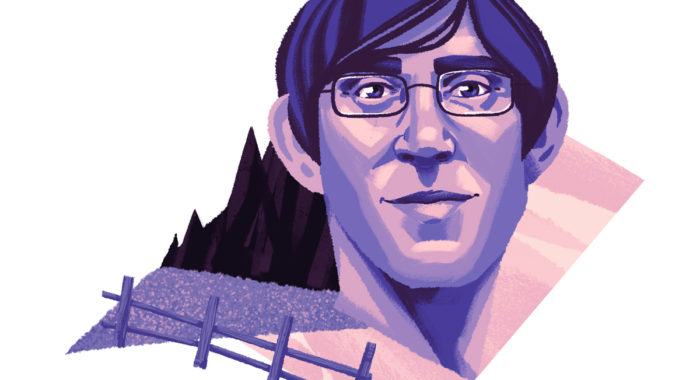When he was in eighth grade, Brian Lindstrom knew he wanted to make films that help people look at others with more understanding, compassion and respect. His English teacher assigned students to write down everything they wanted for Christmas, challenging them to make the lists as exhaustive as possible.
Before having them read the lists out loud, he showed the class a short film, A Day in the Life of Bonnie Consolo. It showed Bonnie, a housewife and mother in Florida, going through her daily routine: putting on makeup, making breakfast for her family, driving her kids to school, and doing all that without having arms.
After the film was over, the teacher asked the class to share their Christmas list, but no one said a word. Brian was impressed by the way the filmmaker made them identify with Bonnie, and in the silence that followed realized that’s what he wanted to do – make films that help people change and grow, while understanding each other better.
Brian was the first member of his family to go to college. He says he put himself through it with a combination of student loans, scholarships, and summers spent working in a salmon cannery in Alaska. After attending the University of Oregon, Rutgers and Lewis & Clark College, a short film about his grandfather got him accepted at Columbia University, where he received an MFA in directing and screenwriting.
He is now a well-known and thought-provoking director whose documentaries challenge viewers to look at the world around them with more empathy and humanity.
Here are some of the things he said along the years about his work and how he builds intimacy with the subjects of his films, mostly people with mental illnesses or drug addiction.
•”I make films about hard-hit people trying to change or—without being hyperbolic—in many cases, save their lives. Longtime crack and heroin addicts trying to stay clean in “Finding Normal”; inmate moms trying to have relationships with their children in “Mothering Inside.” The stakes are high, and the participants have a goal they are trying to attain with every fiber of their being. They have something bigger and better to focus on than me and my camera. As a recovering drug addict trying to rebuild his life and be a better father to his daughter told me during the making of “Finding Normal,” “Dude, you’re the least of my problems.””, as he explains here.
•”I think of the camera as a sort of passport.”, he says in this interview. “I was really excited about the idea that I could use the camera to hang out with people who I thought were interesting. Especially cinéma vérité filmmaking, which I’ve done a lot of and I really enjoy. It allows me to insert myself into people’s lives in hopefully not too obtrusive of a way and kind of reveals the kind of everyday struggles and beauty and transcendence that is out there. If you look for it, you can find it.”
• I feel a large part of my role is that of witness. Witness to their full humanity, their joy, sorrow and pain as well as their strength. The audience needs to understand the pain so they can fully grasp the strength. I’ve found that by approaching people in an open-hearted way and without judgment or assumptions—meaning that we are on equal ground here as people searching for something true and maybe even beautiful in this particular journey that is unfolding in front of the camera—that they open up to me because they feel understood and respected. And for many if not most, these are not familiar feelings.
• One of the many things that draws me to cinema-verite is the form’s unique ability to allow character to reveal itself through action and over time. It is the cinematic equivalent to what someone said about baseball: “It offers the athlete more space and time in which to define themselves than any other sport.” The sheer amount of time spent together filming (and not filming) is an opportunity to build an intimacy between participant and filmmaker that (one hopes) fosters trust. It is that trust that lays a groundwork that at least allows for the possibility of revelation.
•”I’ve spent years doing participatory video projects that put a camera in the hands of people with mental illness and newly-recovering addicts.”, explains Brain in The Rumpus. “What I’ve found is that if you approach people out of respect and kindness, they are happy to share their struggles—and their victories—with you. But I think it is important to subtly communicate that in this exchange, they are providing you with a great gift: an expanded understanding of what it means to be human, and perhaps a peek into grace.”
Register here for the 6th edition of The Power of Storytelling to meet Brian Lindstrom in person.



